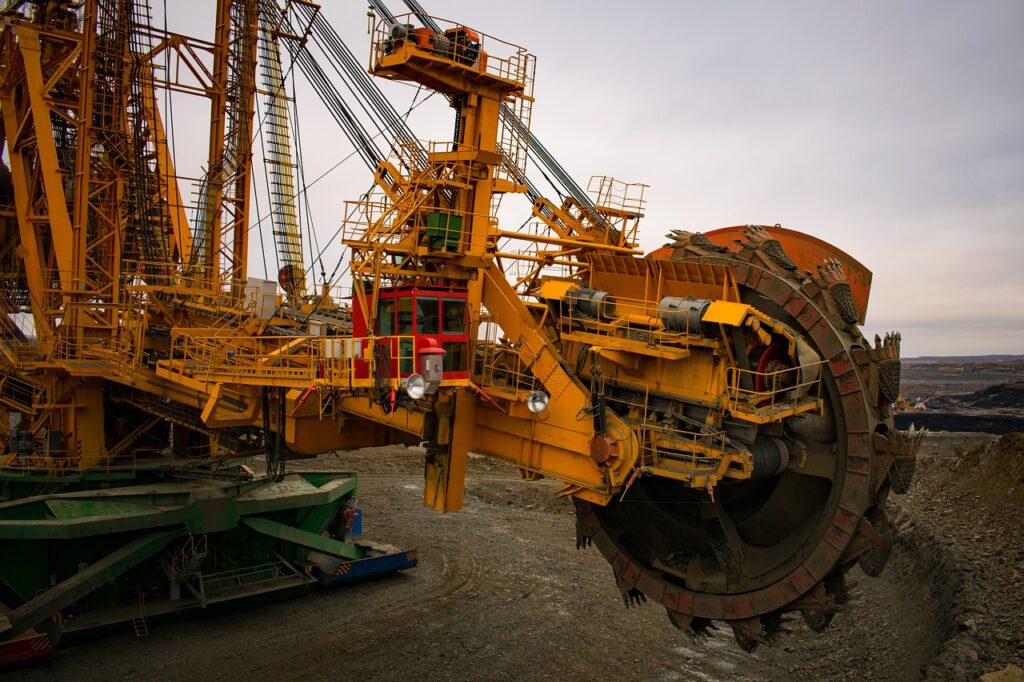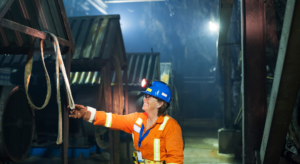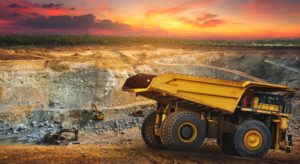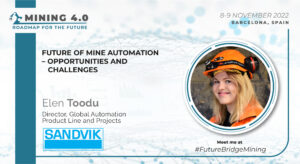The mining industry is experiencing a shift from the integration of machine learning (ML) technologies, especially in grade control & resource estimation. Furthermore, traditional methods, although well-proven, fail to capture the complex spatial relationships and subtle patterns within geological data. Machine learning algorithms revolutionize how mining companies approach these critical aspects of operations. This is by providing better accuracy, efficiency, and predictability. So, this helps uncover patterns and relationships from millions of historical data records, sensor information, and real-time measurements. This is by leveraging vast amounts of information that might not be identifiable through human analysts. This article covers three key areas of the role of machine learning in grade control & resource estimation. These are intelligent data acquisition and processing systems, advanced predictive modeling for resource estimation, and real-time optimization frameworks for grade control.
Intelligent Data Acquisition and Processing Systems For Grade Control & Resource Estimation
Modern mining operations need the support of sophisticated data collection and processing capabilities to ensure effective machine-learning applications. So, let us see the elements that help to ensure this:
Advanced Sensing Technologies and IoT Integration
Mining operations cover their sites with a network of smart sensors and Internet of Things (IoT) devices. Furthermore, highly developed sensors monitor geological characteristics, shifts in ore grade, and equipment performance, around the clock. Photogrammetry systems on drones also create detailed 3D maps of mining areas. Moreover, automated sampling equipment ensures that the data are collected consistently. In addition, LiDAR-derived high-resolution spatial data enable the mapping of geological structures precisely. These are closed-loop systems that generate streaming data, which is pumped into machine-learning algorithms. So, the resulting feedback loop dynamically enhances operational knowledge and decision-making capability.
Real-time Data Validation and Quality Control
Modern miners depend on sophisticated systems of verification involving machine learning to ensure data integrity. Furthermore, drawing comparisons between incoming information and past patterns and expected ranges, these systems flag anomalies automatically. Moreover, multiple validation algorithms work in parallel. Each of them specializes in some aspect of data quality. In addition, the system flags suspicious readings for human checks but maintains the stream of data. Additionally, advanced neural networks rely on operator corrections. This continually increases their ability to discriminate between real anomalies and anticipated variations in mining conditions. So, in this cascaded approach, only validated, clean data makes it to downstream analyses.
Data Integration and Standardization
Complex mining operations generate data from diverse sources. It includes drill logs, sensor networks, laboratory analyses, and historical records. Machine learning in grade control & resource estimation reconciles these diverse inputs using automated standardization protocols. Furthermore, intelligent algorithms manage missing values by contextual hints and historical patterns. It also automatically reconciles measurements to consistent units & formats and reconciles discrepancies between data sources. Moreover, temporal alignment algorithms ensure that data collection frequencies can be combined meaningfully. So, this standardization results in regularised datasets that capture the entire complexity of mining practices.
Cloud-Based Data Management
The data demands of modern mining operations are processed through distributed cloud computing platforms. Furthermore, the systems provide elastic storage and computing in a single package. It automatically adjusts resources to the needs of the operation. Moreover, sensitive data is kept safe behind high-security protocols while allowing authorized personnel access to the data from anywhere. Machine learning in grade control & resource estimation also optimizes data storage patterns. It moves less accessed information into cold storage and maintains quick access to critical data. The system backs up data in many locations automatically. As a result, it ensures business continuity with minimum storage costs.
Improving Resource Estimation with Machine Learning: Advanced Predictive Modeling
Machine learning is changing the way mining companies do resource estimation. It makes more precise predictions and effective risk assessment possible. Let us see the elements that help machine learning algorithms achieve this:
Deep Learning for Geological Modeling
Sophisticated neural networks now work across several data types to build a holistic picture of the geological models. These systems combine drill core data with geophysical surveys and historical mining data. It creates a detailed 3D models of mineral deposits. The models are also able to pick up subtle patterns in rock formations that often indicate high-grade zones. Furthermore, machine learning in grade control & resource estimation constantly updates these models as more data becomes available. This improves the accuracy of prediction with time. Moreover, this dynamic modeling approach results in a huge decrease in exploration costs and a big increase in the discovery of resources.
Ensemble Methods for Grade Estimation
Modern mining companies already use advanced ensemble learning methods. It involves stitching together several machine-learning algorithms. This improves the accuracy of grade estimation. Furthermore, these systems typically integrate random forests, gradient boosting, and neural networks. All of these look at the data from different perspectives. Moreover, the ensemble approach puts weights on what each model predicts, based on how well it has done in similar types of geological environments in the past. This mixture of diverse analytical techniques has proved especially successful in complex deposits, where methods of geostatistics struggle. Additionally, It even gives confidence intervals around each estimate, so operators can make better decisions.
Pattern Recognition in Drill Core Analysis
Advanced image recognition systems automate the analysis of drill core samples. This significantly accelerates the resource estimation process. Furthermore, these systems use convolutional neural networks. It helps to identify mineralogical patterns, textures, and structures in images of cores and scanning data. Moreover, machine learning in grade control & resource estimation sort rock types, and map alteration zones with a consistency that surpasses human ability. The technology can also analyze thousands of meters of core data in hours, while still maintaining a uniform standard of analysis. So, this automated process reduces analysis time while improving the accuracy of resource classification.
Uncertainty Quantification and Risk Assessment
Resource estimation in modern times relies on probabilistic machine learning models to produce whole risk assessments. Furthermore, these systems generate probability distributions for grade estimates, considering various sources of uncertainty. These models also take geological heterogeneity, data sampling error as well as analytical uncertainty into consideration in their computations. In addition, thousands of simulations are carried out using sophisticated algorithms to examine possible outcomes. Such geometric estimation is beneficial to mining companies when it comes to making decisions on resource development and mine planning. Therefore, it results in prudent investment choices.
Machine Learning in Grade Control Techniques: Real-time Optimization Frameworks
Machine learning-driven real-time optimization allows dynamic grade control and enhanced operations. So, let us see the factors leading to an effective process of grade control:
Dynamic Grade Boundary Optimization
Advanced optimization algorithms consistently adjust grade boundaries based on real-time operational data. In addition, such systems examine samples taken from blast holes, production metrics, and the functioning of the processing plant. This aids in adjusting and optimizing cut-off grades dynamically. Also, the machine learning models estimate the economic effect of various decisions on grade boundaries. It takes into consideration the prices of metals in the market and also the costs of processing. The algorithms also learn from historical performance data to improve their optimization strategies over time. So, this dynamic approach significantly improves resource recovery without compromising product quality specifications.
Automated Blast Pattern Design
Machine learning systems optimize patterns of blasting by analyzing several parameters at once. Furthermore, these algorithms consider rock hardness, structural geology, and desired fragmentation outcomes. This generates customized blast designs. Moreover, neural networks anticipate blast outcomes using historical data and the current situation, so blasting parameters can be constantly adjusted. Additionally, the system dynamically optimizes hole spacing, charging patterns, and timing sequences to achieve the best degree of fragmentation. As a result, this automated method minimizes ore dilution and enhances downstream processing efficiency.
Production Sequence Optimization
Advanced algorithms plan mining sequences, taking into account grade distribution, equipment availability, and processing restrictions, all at the same time. Furthermore, these systems process dozens of possibilities to find the best possible production order. Machine learning algorithms predict equipment performance and required maintenance, thereby integrating it into the sequence planning of activities. The plans are also updated regularly based on actual production data or changed conditions. Additionally, this approach of adaptive optimization immensely helps to improve the efficiency of operation while maintaining grade control.
Quality Control and Process Integration
Modern mining operations use integrated machine learning in grade control & resource estimation to maintain product quality throughout the mining process. Furthermore, these algorithms monitor material flow from extraction to processing, predicting and preventing quality issues before they occur. Moreover, real-time analysis of the distribution of grades allows for proactive adjustments to be made to mining and processing parameters. The system optimizes the blending strategies to maintain the consistent quality of processing plants. So, this integrated approach minimizes variations in quality and at the same time increases resource recovery and efficiency in processing.
To Sum Up
Modern machine learning is the ultimate tool for today’s mining operations. It has improved grade control & resource estimation due to superior data processing, predictive modeling, and real-time optimization. Moreover, its relevance during the era of rapidly accelerating digital transformation shall increase as it is the future aspect of the sector, increasing the competitive advantage of sustainable operations. Join us at the 6th Mining 4.0 Summit in Barcelona, Spain, on 6-7 November 2024, to learn about more such innovations, real-life case studies, and more. This exclusive event has assembled the industry’s greats to discuss and collaborate. Register now!





